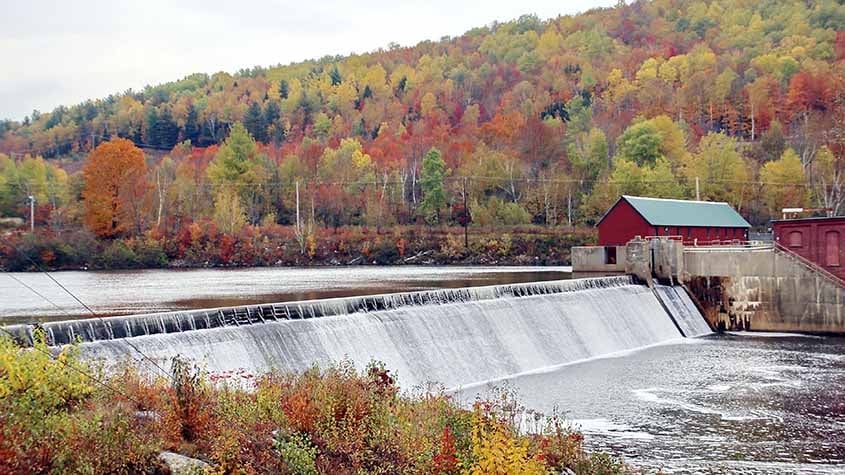Hydropower Basics
Hydropower is energy created from fresh, moving water.
Over 2,000 years ago, the ancient Greeks used the power in rivers and streams to rotate wooden wheels and crush grain to make bread. Today, we still use this water power to generate affordable electricity for everything from factories (that grind far more grain than the Greeks did) to our ovens that let us bake our bread at home.
What Is Hydropower?
Humans have harnessed water power for centuries. But we didn't start making hydropower—electricity from our rivers, streams, and lakes—until just over 100 years ago, not too long after Thomas Edison developed the first commercial electric power system that made electricity widely usable for everyday life.
Today, instead of using large, wooden wheels, we use propeller-like devices called turbines, which spin as water rushes through them, generating electricity. But hydropower has a secret power: It can also store huge amounts of energy to use when other sources aren't available.
According to the U.S. Energy Information Administration 2020 data, hydropower provides about 7% of the United States' electricity and about 27% of our renewable electricity generation. Also, according to the U.S. Energy Information Administration, almost every state uses hydropower. It can provide a reliable way to power our lives for centuries to come.

In the past, we often created hydropower with large dams, but today’s structures are typically far smaller, minimizing their impact on the wildlife and plants that depend on these waterways for survival. Photo from Mark König, Unsplash
How Does Hydropower Work?
Most of the country's hydropower facilities were built in lakes, streams, and rivers decades ago. They often used large dams that block the water's flow, creating a pool of water above the structure. One or more pipes give that pooled water a path to surge downhill. And as the water rushes through those pipes, it spins a turbine, which runs a generator that sends electricity to your home.
Today, most newly constructed hydropower facilities are far smaller and use new techniques to reduce impact on wildlife and plants that rely on naturally flowing waterways. Fish, for example, migrate upstream to feed and mate. To help them navigate around our dams, we build fish ladders, so they can climb over the top and swim on. Or we don't block their path at all; some new hydropower facilities divert part of a river or stream into a separate channel. That way, the river can race on, undisturbed, while we generate power off to the side.
Some hydropower facilities don't just generate power; they store it in the largest "batteries" on Earth. So-called pumped storage hydropower—also known as water batteries—can hold huge amounts of energy for months at a time. This storage is very important. Water batteries can store excess energy that can be used at night or during gentle breezes. In the United States, water batteries can store up to 553 gigawatt-hours of energy. That could power the entire country's video gaming for about a week.
Hydropower News and Feature Stories
REDi Island: Renewable Energy Discovery Island
Virtual world showing marine energy and hydropower applications
Energy Kids: Hydropower (U.S. Energy Information Administration)
Hydropower Basics (U.S. Department of Energy)
How Hydropower Works (U.S. Department of Energy)
Share
Last Updated Oct. 8, 2025
